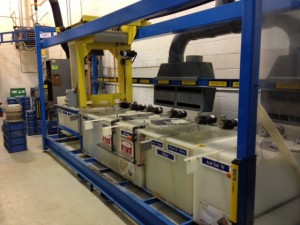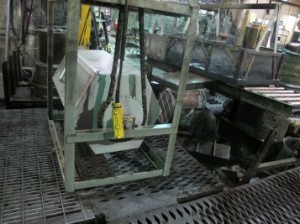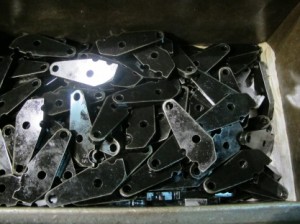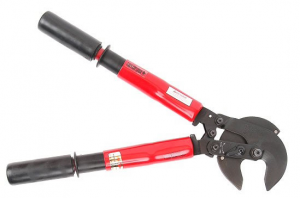Metlab offers black oxide coating service. This service is in addition to its current array of heat treating services.
Black oxide, which can be applied to a broad range of products, is classified as a conversion coating. It can be applied to ferrous materials as well as stainless steel, copper, copper based alloys, zinc, and sealed powder metal. It can also be used to blacken silver solder.
Black oxide imparts a deep, black, lustrous appearance to the parts being coated, and replicates the surface finish of the part. Although black oxide provides mild corrosion protection to the treated parts, it is primarily used because of its aesthetic properties.
When black oxide is applied to most materials, a top layer of oil, which is generally dry to the touch, wax or lacquer, is applied to enhance the corrosion properties. A further advantage black oxide has over other coatings, is that as a conversion coating, there is minimal buildup, which can generally be measured in microns.
Black oxide can be applied through either a hot process or a cold process. Metlab only performs the hot process as it is more cost effective, provides superior coverage over the cold process and offers enhanced corrosion protection.

Automated black oxide line. Parts move from tank to tank automatically using a robotic handler. (Photograph is courtesy of Hubbard Hall)
The process starts by fixturing the parts. Fixturing consists of hanging individual pieces from a wire, placing parts in baskets, or putting them in a tumbler, depending on part geometry. For example, large unwieldy parts are hung individually; machined parts, which could become damaged from excessive handling, are placed in baskets, and small parts like nuts, bolts and washers are generally tumbled.
The fixtured parts are first cleaned by submersion in an alkaline bath, and then rinsed in clean water. If necessary, parts are moved to an acid bath, and then rinsed again in clean water. For blackening ferrous pieces, parts are placed in a bath of proprietary blackening solution. The blackening solution, which contains sodium hydroxide, nitrates and nitrites, converts the surface of the material into magnetite (Fe3O4). Hot black oxide for stainless steel parts consists of the same steps, except for the proprietary blackening bath.
Because stainless steels have a tightly adhered oxide layer, it is critical to break through this layer in order to ensure that the surface consists of free iron for conversion. Although breaking the layer can be done chemically, it is generally done through the use of glass bead blasting or sandblasting because those two methods are more efficient. Oil is typically applied to the blackened surface to impart a high degree of luster, unless a matte finish is desired, as in the case of medical instruments.
However, regardless of the material being blackened, all of the cleaning and rinsing is done in warm baths, up to 160°F, and the blackening at 265°F to 285°F.
The final step in the process is applying oil to the heated parts. This oil, which is generally evaporative and dry to the touch, seals the black finish by “sinking” into the applied porous layer of the black oxide. It is the oil that provides the corrosion protection the work-piece.
The end result – Cable cutters with black oxide finish on the jaws for enhanced aesthetics as well as improved corrosion protection
The black oxide process has many advantages over other processes. These include:
- Economics – Black oxide is far less expensive than painting, electroplating or powder coating.
- Productivity – blackening can be done to large batches of parts by tumbling or fixturing, making it ideal for processing small parts.
- Size Change – There are no significant dimensional changes to a black oxide part. The layer thickness depth can be measured approximately one micron.
- Specifications – Black oxide conforms to several different military specifications, including MIL-DTL-13924, as well AMS 2485, ASTM D769, and ISO 11408.
Black oxide finishing is used for a variety of industrial applications in widespread industries. Some examples include:
- Retail: Store displays and fixtures.
- Automotive: Cans for oil filters, numerous under the hood fasteners
- Electrical: Wire strippers and cutters
- Home / Garden: Tree toppers – jaws and clipping tools
- Gearing: Small gears for tiny timers and electrical switches
- Firearms: Gun components, shotgun shell magazines






